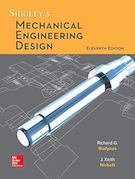Case Studies in Engineering Ethics
The field of engineering has played a crucial role in advancing technology and building infrastructure. However, engineers must also navigate ethical dilemmas that arise when their professional obligations conflict with personal or financial interests. The three case studies that follow highlight the importance of engineering ethics and the consequences of failing to prioritize safety.
Case Study: The Piper Alpha Disaster
Engineering is a profession that requires technical expertise and a deep sense of responsibility to the public's health, safety, and welfare. Engineers are tasked with designing and building structures, systems, and products that are safe, reliable, and efficient. However, this responsibility also requires engineers to navigate ethical dilemmas, particularly when their professional obligations conflict with personal interests or financial incentives. One such case that highlights the importance of engineering ethics is the Piper Alpha disaster.
The Piper Alpha disaster occurred on July 6, 1988, when a North Sea oil platform operated by Occidental Petroleum exploded and caught fire, killing 167 people. The disaster was a result of a combination of factors, including poor maintenance, inadequate training, and a lack of emergency procedures. However, the root cause of the disaster was a culture of complacency and a disregard for safety that pervaded the company.
The investigation into the disaster found that Occidental Petroleum had a history of cutting corners on safety in order to maximize profits. The company had failed to invest in the necessary safety equipment, and its engineers had ignored warning signs and recommendations from outside experts. In the months leading up to the disaster, the platform's safety systems had repeatedly failed, but these failures were not addressed. Instead, the engineers responsible for the platform had focused on maximizing production, even though this put the lives of the workers at risk.
The Piper Alpha disaster highlights the importance of engineering ethics and the consequences of failing to prioritize safety. Engineers must always be vigilant about the potential for ethical dilemmas and must be prepared to navigate these challenges. They must also be committed to transparency, honesty, and fairness, even when these values conflict with personal or financial interests.
One key lesson from the Piper Alpha disaster is the importance of culture. Companies must create a culture of safety, in which workers and engineers are encouraged to report problems and to speak up when they see something that is unsafe. This culture must be reinforced by senior management and must be embodied in the company's policies, procedures, and practices. Engineers must also be trained to understand the importance of safety and to identify and respond to potential risks.
Another important lesson is the need for independent oversight. In order to ensure that engineers are acting in the public's best interests, companies must establish independent oversight bodies that can review their practices and assess the potential risks of their projects. These bodies must have the authority to take action if they identify potential risks, and they must be independent of the company's management and financial interests.
The Piper Alpha disaster is a case study in engineering ethics that highlights the importance of safety, culture, and independent oversight. Engineers must always prioritize the public's health, safety, and welfare, and must be prepared to navigate ethical dilemmas when they arise. By following these principles, engineers can ensure that their work is safe, reliable, and serves the best interests of the public.
Case Study: The Bridge Collapse
In the early 2000s, a large engineering firm was commissioned to design and build a bridge in a major metropolitan area. The bridge was to be a critical link in the city's transportation infrastructure and was designed to withstand heavy traffic and extreme weather conditions. However, soon after the bridge was completed and opened to the public, it collapsed during a heavy storm, causing multiple fatalities and injuring many others.
The subsequent investigation revealed that the collapse was due to the use of substandard materials and inadequate construction techniques. It was also discovered that the engineers who designed the bridge had ignored warnings from contractors about the quality of the materials and the need for additional reinforcements.
The engineers involved in the project faced a major ethical dilemma. On one hand, they had a professional obligation to design and construct a bridge that was safe and fit for its intended purpose. On the other hand, they were under intense pressure from the company and the project stakeholders to complete the project on time and within budget.
The engineers chose to prioritize the project timeline and budget over safety, and as a result, the bridge was constructed using substandard materials and inadequate construction techniques. The collapse of the bridge caused multiple fatalities, injured many others, and had far-reaching consequences for the engineering profession.
This case highlights the importance of ethical behavior in engineering and the need for engineers to navigate challenging situations in a responsible and ethical manner. Engineers have a professional obligation to prioritize public safety and welfare, and to design and construct structures that are safe and fit for their intended purpose.
In this case, the engineers failed to live up to their professional obligations and as a result, put the public at risk. This serves as a reminder of the critical role that engineers play in society and the need for them to uphold the highest ethical standards in their work.
Case Study: The Tainted Water Supply
In a small town, the local water supply has been contaminated with a hazardous chemical, causing widespread health problems for residents. The contamination was traced back to a nearby chemical plant, owned by a large corporation. The plant had been dumping toxic waste into the town's water supply for years without the knowledge or consent of the townspeople.
The company hired a team of engineers to assess the situation and find a solution. The team consisted of four engineers, including the lead engineer, who was a licensed professional engineer (PE). As the team conducted their investigation, they discovered that the company had been aware of the contamination for several years but had not taken any action to address it.
The lead engineer was faced with a dilemma. He knew that he had a responsibility to the public to ensure the safety of the water supply and to report any hazards to the appropriate authorities. However, the company was pressuring him to downplay the severity of the contamination and to provide a report that would minimize the company's responsibility and potential liability.
The lead engineer ultimately decided to report the full extent of the contamination to the appropriate authorities, regardless of the consequences for the company. This decision was not popular with the company, but it was the right thing to do for the safety and health of the residents of the town.
The lead engineer's actions were a clear demonstration of his commitment to engineering ethics. He showed a strong sense of responsibility to the public and was willing to put his professional reputation on the line to do what was right. This case serves as an example of the importance of maintaining high ethical standards in the engineering profession, even in the face of difficult and challenging circumstances.
Conclusion
These case studies demonstrate the importance of engineers to prioritize the public's health, safety, and welfare and to uphold the highest ethical standards in their work. The Piper Alpha disaster emphasizes the need for engineers to prioritize safety, culture, and independent oversight. The Bridge Collapse illustrates the importance of ethical behavior and upholding the highest standards of professional obligation to prioritize public safety and welfare. Lastly, The Tainted Water Supply showcases the significance of transparency and responsibility in reporting hazards and the need to prioritize the public's health and safety over personal interests.
Continuing education and training in ethics is an important tool for engineers to stay informed about ethical principles and practices, and to navigate challenging situations in a responsible and ethical manner. By prioritizing ethical behavior and upholding professional obligations, engineers can maintain the trust and confidence of the public and contribute to the advancement of the engineering profession.
PDH Classroom offers a suite of online continuing education courses tailored to engineers. These courses can be used to fulfill PDH credit requirements for maintaining your PE license, or just as a part of staying ahead in your field.




